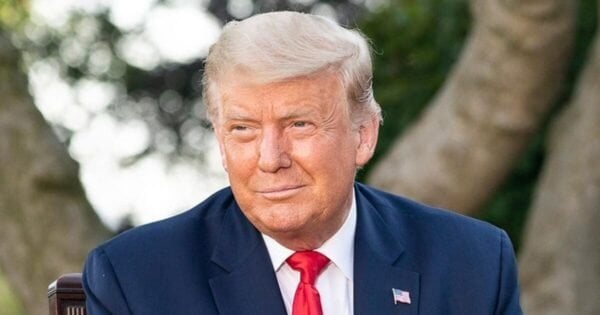Op-ed views and opinions expressed are solely those of the author.
President Trump has now been in office for six months, and despite the dire predictions from pundits foreseeing economic collapse and global instability, the reality has proven to be remarkably different. The United States is not only more secure, but the world is safer, and the economy is positioned for long-term growth with negligible inflation. Frankly, things could not have unfolded more favorably.
Upon taking office on January 20, Trump faced a wobbly economy. Growth was stagnating; inflation was on the rise, threatening to exceed 3% annually; and manufacturing was continuing its downward spiral.
In addition, the nation had seen the influx of as many as 20 million undocumented immigrants over the previous four years, with thousands entering each day. While many sought a better life, a significant number were undesirable individuals, including criminals.
Shortly after his inauguration, Trump began implementing his tariff policy, threatening substantial tariffs on Mexico and Canada unless they took immediate steps to secure their borders against illegal immigration.
Both countries responded immediately by pledging billions to improve border security. Coupled with Trump’s efforts to bolster U.S. border control, this initiative resulted in a dramatic decrease in illicit crossings. Today, the number of undocumented immigrants entering the U.S. has plummeted to a historic low.
In terms of economic policy, Trump sought to stop the outflow of American wealth to foreign countries. The U.S. was grappling with a staggering negative trade balance exceeding $800 billion annually, amounting to a significant loss of wealth.
After scrutinizing existing trade agreements, Trump announced his intention to impose high tariffs on virtually every nation. Historically, the U.S. often charged lower tariffs on imported goods—around 2.5%—while other nations imposed tariffs as high as 20%, 30%, 50% or higher on American products. Trump’s goal was reciprocal tariffs that would not only generate revenue for the government but also level the playing field for American producers and open foreign markets.
So far, this tariff strategy has yielded over $100 billion in revenue for the U.S. government with minimal impact on consumer prices. New trade agreements have already been established with the United Kingdom, Vietnam, and China, while negotiations with others are ongoing. These agreements can be complex, as nations often seek exceptions to protect certain industries. But progress is being made.
Trump’s overarching economic policy aims to spur growth, enhance tax revenues, keep tax rates low for all Americans, remove counter-productive regulations and return manufacturing to the US. Recent legislative victories have further cemented these goals.
Additionally, Trump is focused on reducing government spending, which has ballooned, especially in the last six years. In 2019, annual government spending was $4.5 trillion, but it will exceed $7 trillion this year.
Through his Department of Government Efficiency, Trump identified hundreds of billions in wasteful and fraudulent spending. He worked hard to eliminate as much as possible. While political resistance limited the extent of these cuts, progress is evident in his efforts to reduce the deficit. In fact, June marked a significant milestone—Trump eliminated the monthly deficit and even recorded a surplus.
Although this is not likely to immediately continue, it illustrates the positive impact of his policies. If the Federal Reserve would ease interest rates from their current restrictive level, economic growth could accelerate and the deficit would be further reduced.
On the foreign policy front, Trump has made notable strides. He diffused tensions between Israel and Iran. He dismantled Iran’s nuclear capabilities. He prevented a potential war between India and Pakistan. He also played a significant role in ending a decades-old conflict in Africa between Rwanda and Congo. And he is working on more peace deals in the Middle East.
Though peace between Russia and Ukraine remains elusive—largely due to Putin’s resistance—Trump has set a distinct deadline for achieving a resolution: 50 days for Russia to negotiate a peace deal. Failure to comply means harsh sanctions that could trigger a severe economic downturn for Russia, compelling them to seek peace.
Remember what happened to Iran when they exceeded their 60-day requirement?
Trump’s accomplishments in his first six months are unparalleled by any president in history. Looking ahead, he will continue to implement policies that are set to steer U.S. policy in a positive direction.
By this time next year, after full policy implementation, the world will be safer and Americans more secure. The economy will have cheap energy, low inflation, new job opportunities, stronger economic growth and more opportunities for US companies to profitably sell their products abroad.
With a secure border and a renewed sense of optimism, Trump is ushering in what could very well be the Golden Years for America.
DONATE TO BIZPAC REVIEW
Please help us! If you are fed up with letting radical big tech execs, phony fact-checkers, tyrannical liberals and a lying mainstream media have unprecedented power over your news please consider making a donation to BPR to help us fight them. Now is the time. Truth has never been more critical!
Success! Thank you for donating. Please share BPR content to help combat the lies.
We have no tolerance for comments containing violence, racism, profanity, vulgarity, doxing, or discourteous behavior. Thank you for partnering with us to maintain fruitful conversation.









![Illegal Alien Walked Free After Decapitating Woman, Abusing Corpse for Weeks [WATCH]](https://www.right2024.com/wp-content/uploads/2025/07/1753013138_Illegal-Alien-Walked-Free-After-Decapitating-Woman-Abusing-Corpse-for-350x250.jpg)






